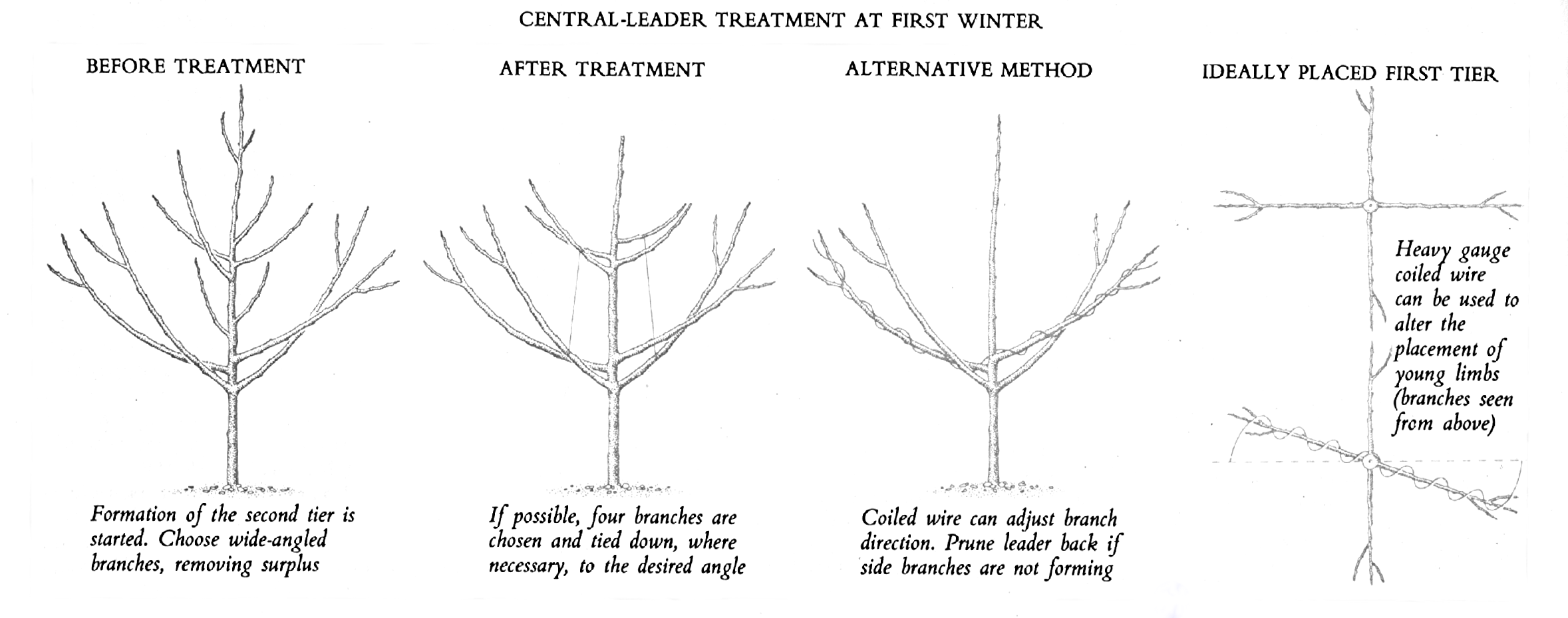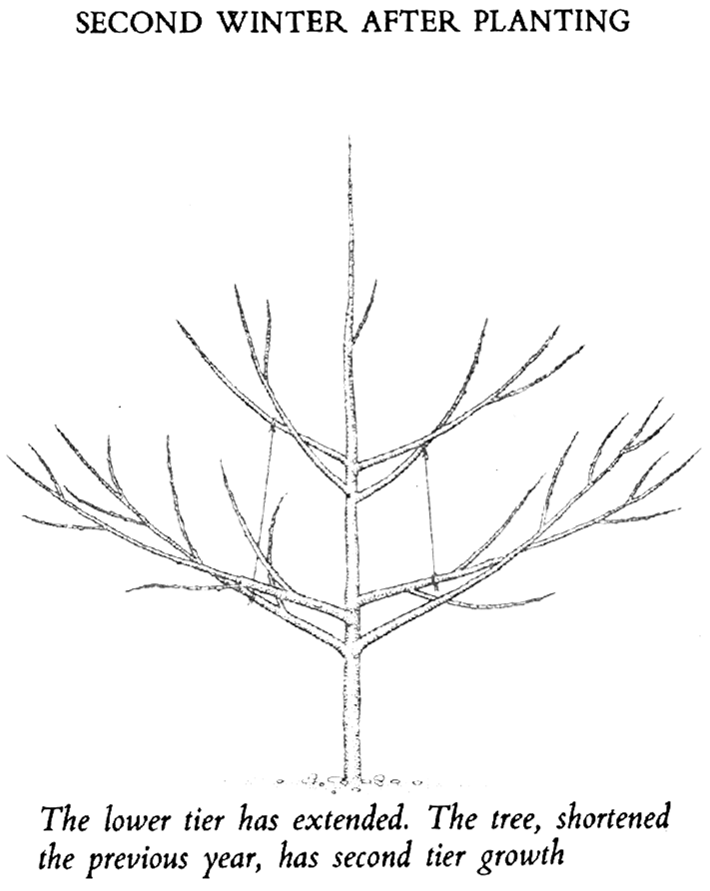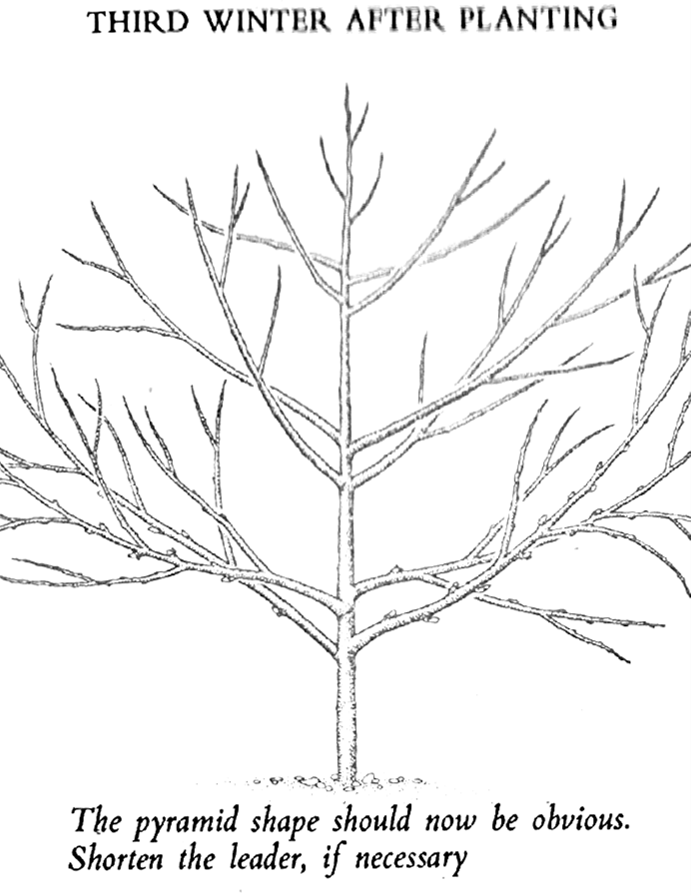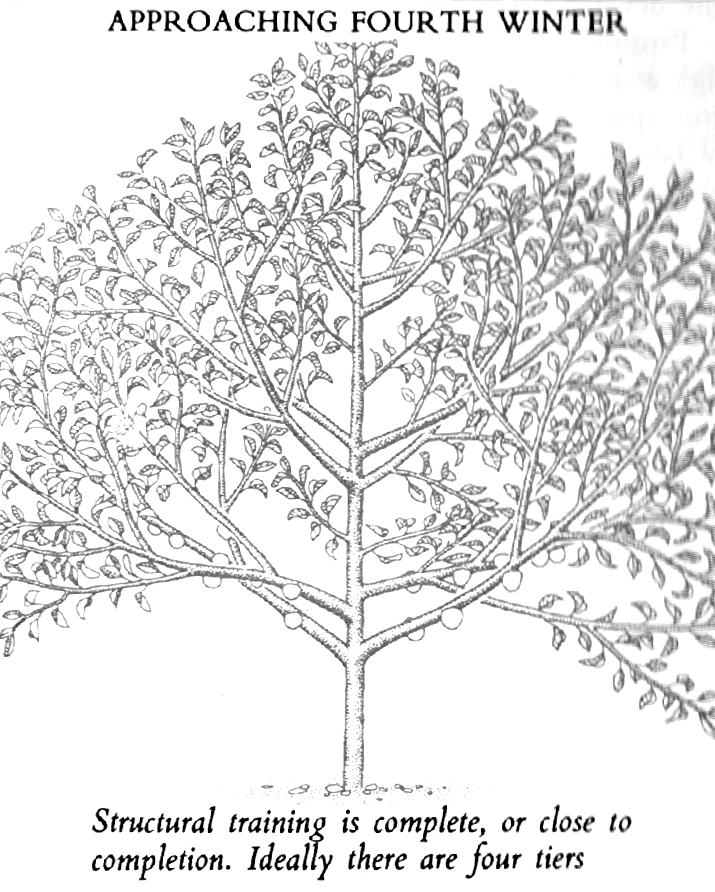Trellising and pruning are used to:
- Maximise the ability of the plant to produce a crop.
- Create a shape that is ideal for harvesting.
- Allow the plant to be directed in a manner that maximises light and encourages fruiting.
- Make it easier to control diseases and pests.
- To produce better quality plants and to extend the life of a plant.
- Allow plants to fruit earlier.
Training Tree Crops
Training tree crops – Apple
An example of the application of these techniques is the training of apple trees. As an example, a commonly used training system used in apple orchards is discussed. The system is called the central leader system.

The first phase of frame development occurs at planting when the stem is pruned down to a height of 80 cm above the ground and the side shoots are removed leaving only four selected branches that form an evenly spaced tier. This is normally done in winter. These remaining branches are then staked at an angle of 30-40 degrees from the horizontal.
Summer pruning will have to be done to remove misplaced branches.


In the second year, the first tier would have grown new shoots and the tree has developed a second tier that will be staked to the first tier. This second tier should be about 50 cm above the first tier. At this point, it is advisable to shorten the leader if it is too vigorous. If the branches that make up the tier are not evenly spaced; lightly coiled wire can be used to correct this. This technique can also be used to adjust the angle of the growth of the side branches. Twine half the wire around the branch on one side of the central leader and extend it to twine around a branch on the other side. Leave the wire in place for only about six weeks so that it does not damage the wood and buds.

During the third winter, the tree would have developed a pyramid shape and a third tier. The second tier will have produced laterals. Pruning should be kept to the absolute minimum. The leader should be shortened to stimulate growth in the framework.

In the fourth winter, the tree has developed four tiers and the leader is shortened again. By this time the tree produces fruit and it might be necessary to thin fruit from the branch terminals until they are stronger and able to withstand the weight of the fruit.
After the fourth-year light pruning is done. This promotes early and heavy first crop. Laterals should only be cut back in the young tree if they are out of place or diseased.
Training Vegetable Crops/Hydroponics Tomato
Click here to view a video that explains hydroponics tomatoes in Netherlands' innovative farming.
As a second example of training techniques, tunnel grown tomatoes are discussed. Very few tools are used here.
Tunnel tomatoes are indeterminate growers. This means that they can grow and produce fruit continuously over an extended time period. Tomato follows a sympodial growth model, which means that after the juvenile growth phase has terminated, the apical meristem terminates in an inflorescence.
In order for the plant to continue growing, the axillary bud of the terminal leaf produces two to three leaves before it also terminates in an inflorescence. The next axillary will continue to grow in a similar manner.
This process of the sprouting bud, the formation of two to three leaves and an inflorescence, will continue indefinitely as long as the plant remains healthy and protected from unfavourable conditions.
To prevent plants from becoming too dense, the lateral shoots are removed, using either pruning shares or pruning knives. The tools must be kept sterile during the process. In this way, the single, remaining stem becomes very long and needs to be supported. Often two stems will be developed from a single plant. The simplest method used for support is using wire or specialised thread that is anchored in the ground. The loose end of the stay wire is spun around the stem being supported. Wires are spun at a suitable height inside the tunnel, onto which the stems are anchored. As the plants grow, the anchors are disengaged from the wires, and the stems are layered just above soil levels, reducing the plant mass that is required to be kept up.